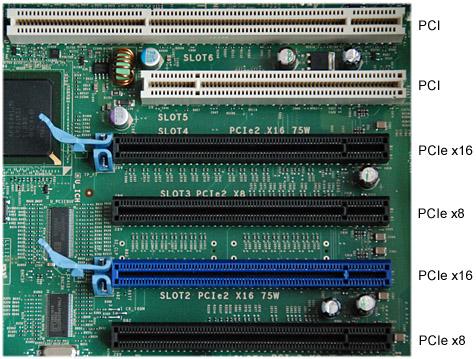- Related articles
- Optical Transceivers for Cisco WS-C3650-48TD-L Switch
- Optical Transceivers for Cisco WS-C3650-48PQ-E Switch
- All Cisco DWDM-XFP-50.92's information (List price, Specs, Datasheet PDF, Compatibility ma
- What Does XFP Stand For?
- The Things You Need to Know about 1000BASE-LR Ethernet Standards
- All Cisco QSFP-40G-ER4 price 's information (List price, Specs, Datasheet PDF, Compatibili
- How to Remove PCIE Slot Cover?
- All Cisco DWDM-XFP-44.53's information (List price, Specs, Datasheet PDF, Compatibility ma
- Optical Transceivers for Cisco WS-C2960S-F48TS-L Switch
- Optical Transceivers for Cisco SF200E-24-UK Switch

PCI Express is the meaning of high speed, very fast. It is the latest bus and interface standards, PCI Express slot will be fully replaced the previous generation of PCI or AGP slot, and there is great potential for development.

What is a PCI Express slot?
PCI Express is the latest bus and interface standards, its original name is "3GIO", is put forward by Intel, it represents the next generation I/O interface standards, and it renamed "PCI Express" after approving and issuing by PCI to a PCI - SIG (special interest group). The new standards will be fully replace the existing PCI or AGP, finally realizes the unity of bus standard. There are a variety of specifications for PCI Express, from x 1 to x 16, which can meet the needs of low-speed and high-speed equipment in a certain period of time now and future.
Types of PCI Express slot
There are 4 types of PCI Express slot in the current market, namely PCI Express x 1, x 4, x 8, x 16. The following table shows the detailed parameters of different types:
|
Lanes |
The total number of pins |
Pin number of the main interface area |
Total Length |
Length of the main interface area |
Bus width |
Clock rate |
Transmission rate |
|
X1 |
36 |
14 |
25 mm |
7.65 mm |
8 bits |
2.5 GHz |
512 MiB/s(Duplex) |
|
X4 |
64 |
42 |
39 mm |
21.65 mm |
8 bits |
2.5 GHz |
2.0 GiB/s(Duplex) |
|
X8 |
98 |
76 |
56 mm |
38.65 mm |
8 bits |
2.5 GHz |
4.0 GiB/s(Duplex) |
|
X16 |
164 |
142 |
89 mm |
71.65 mm |
8 bits |
2.5 GHz |
8.0 GiB/s(Duplex) |
PCI Express slot compatibility
A little-known fact is that you can install any PCI Express expansion card in any PCI Express slot. For example, you can install an x1 expansion card in any kind of PCI Express slot; it doesn’t need to be installed in an x1 slot. So, if you have an x4 expansion card but your motherboard doesn’t have an x4 PCI Express slot, no problem; simply install it in an x8 or x16 slot.
After knowing the basic information of PCI Express slot, there is other thing you need to know if you want to have a profound understanding for PCI Express slot, so do you know how many watts can a PCIE slot provide? It is okay if you have no idea, and the next part will give the answer to this question.
PCI Express slot power
Legacy PCI slots were designed for a limit of 25 watts per slot, but PCI Express is designed for 75 watts per slot. Cheap motherboards can and will burn dramatically when each of 4 or more slots is pulling 75 watts, however a good, well designed motherboard will not.
Summary
According to the current trend, PCI Express X1 and PCI Express X16 has become a mainstream PCI - E specifications though PCI Express technical specification allows the X1 (250 MB/SEC), X2, X4, by 8, X12, X16. While many chipset vendors add PCI Express X1 supporting in the South Bridge chip, and add PCI Express X16 supporting in the North Bridge chip.





































































